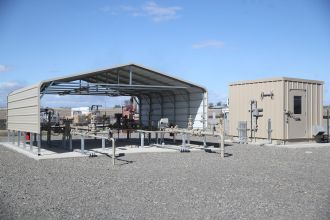At the George DeRuyter and Sons Dairy in central Washington, 7,000 cows produce a lot of manure — 160,000 gallons each day.
And where there’s manure, there’s methane.
While methane can heat your home or power vehicles in the form of compressed natural gas, it can also be a greenhouse gas when released into the atmosphere.
But now greenhouse gas emissions from that waste decomposition are being converted to carbon neutral RNG and injected into our Northwest Pipeline.
The project is one of several RNG projects connecting to Williams pipelines in multiple states.

Just at this one dairy, the project offsets 40,000 metric tons of greenhouse gas emissions every year. That’s a win-win for the dairy and the environment.
“These are difficult projects to get up and going and one of the big issues is access to the interstate pipeline grid,” said Dan Evans, president of Promus Energy, which developed the dairy project. “We’ve had a great partnership with Williams and they’ve been really helpful in us working through the technical challenges and some of the costs associated with getting renewable natural gas from a project like this into the pipeline grid.”
So how does it all work?
The process starts well, with the cows. Instead of their waste going directly into a storage lagoon, it’s collected from the barns and loaded into an anaerobic digester, which enables a biological process to releases biogas, which is then processed nearby into pipeline-ready RNG.
After that, the RNG is injected through an interconnect with our pipelines.
Dairies aren’t the only agriculture endeavor that can turn waste to sustainable energy. Hog farms and other animal operations also are looking to RNG.
Agriculture accounts for about 10 percent of all greenhouse gases, so the potential to offset emissions is tremendous.
“We think renewable natural gas is a great opportunity for Williams,” said Brian Hlavinka, director of business development for Williams. “There’s natural overlap with our core business and the things we do today but also a way to lower emissions not only for ourselves but also for our partners.”
